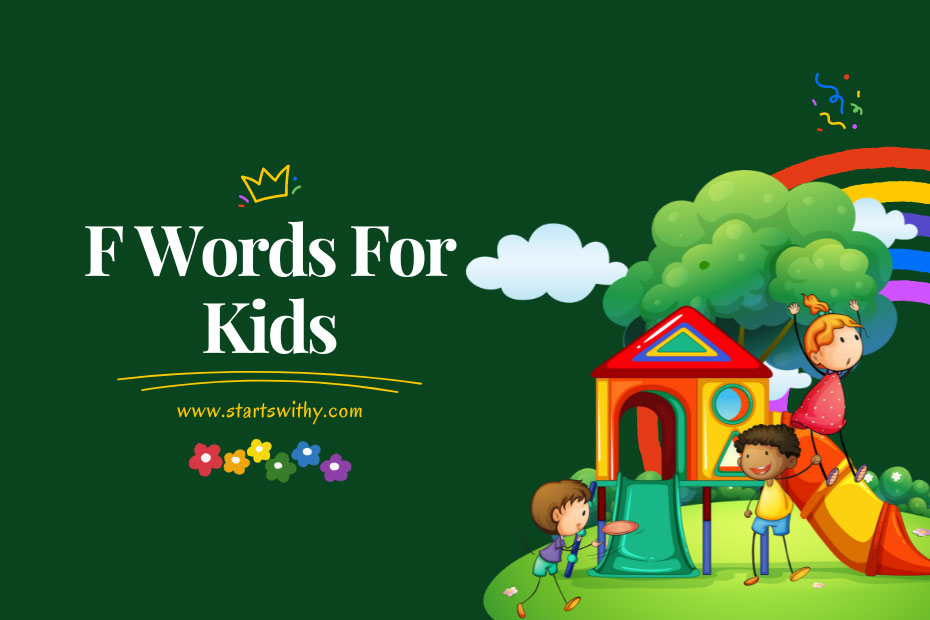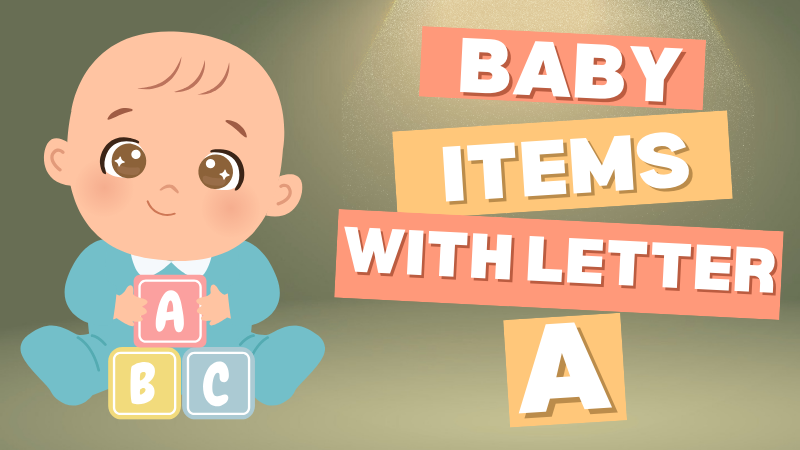Hey there! Are you ready to dive into the wonderful world of F words for kids in Preschool and Kindergarten? Well, you’re in the right place! In this article, I’ll be sharing some fun and educational F words that will help your little ones expand their vocabulary and enhance their language skills. From furry animals to fascinating fruits, we’ll explore a variety of F words that are sure to captivate their imagination. So, let’s get started and make learning an F-tastic adventure!
List of “F” Words for Kids
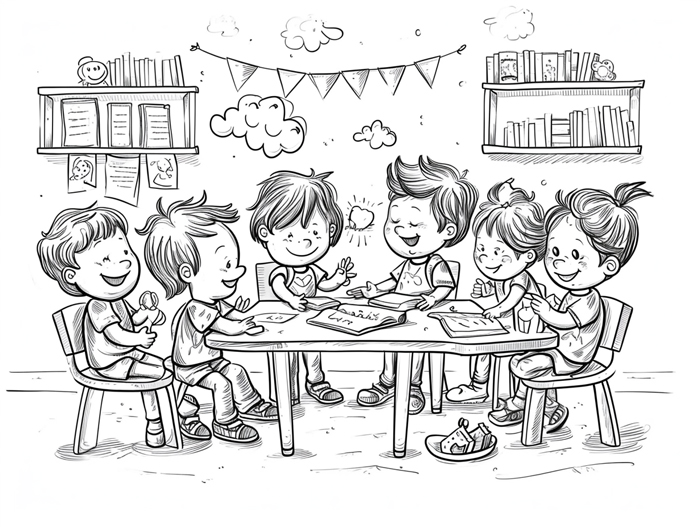
Are you ready to embark on an F-tastic adventure with your little learners? In this section, I’ll share a list of fun and educational “F” words that will expand their vocabulary and enhance their language skills. Let’s dive right in!
- Fruit: Introduce your students to a variety of fruits that start with the letter “F.” From “figs” to “fuzzy peaches”, exploring different fruits will not only teach them new words but also encourage healthy eating habits.
- Farm: Take your students on a virtual trip to the farm. Teach them about “farms”, “farm animals”, and “farm machinery”. This will help them understand where their food comes from and the importance of agriculture in our lives.
- Forest: Immerse your little ones in the world of nature by teaching them words like “forest”, “ferns”, and “foxes”. They will learn about different plants and animals that thrive in this enchanting habitat.
- Fish: Dive into the aquatic world and introduce your students to “fish”, “fins”, and “flippers”. They will discover the colorful and diverse marine life, expanding their knowledge of the animal kingdom.
- Firefighter: Teach your students about community helpers and let them explore the world of firefighting. Introduce words such as “firefighter”, “fire engine”, and “fire hydrant” to build their understanding of these brave heroes.
- Feathers: Engage your students’ imaginations as they learn about birds and their fascinating feathers. Teach them words like “feathers”, “flight”, and “flapping”, while exploring different bird species.
- Friend: Help your students understand the concept of friendship by introducing them to words like “friend”, “friendly”, and “fun”. Encourage discussions about what it means to be a good friend and the importance of kindness.
- Football: Explore the world of sports with words like “football”, “field”, and “fans”. Your students will discover the excitement and teamwork associated with this popular game.
Preschool Words that Start with F
| Word | Sentence for Kids |
|---|---|
| Flower | The colorful flower bloomed in the garden. |
| Fish | We saw a big fish swimming in the pond. |
| Frog | The frog jumped into the pond with a splash. |
| Feather | Feel the soft feather from the bird’s wing. |
| Fruit | I love to eat sweet and juicy fruit. |
| Friend | My friend and I like to play together. |
| Funny | The clown at the circus was really funny. |
| Firetruck | The firetruck rushed to put out the fire. |
| Family | My family includes my parents and siblings. |
| Fox | The fox has a furry tail and likes to hunt. |
| Favorite | Chocolate ice cream is my favorite treat. |
4 Letter Words for Toddlers that Start with F
| Word | Fun Sentence for Kids |
|---|---|
| Frog | The green frog jumped into the pond with a splash. |
| Fish | We saw colorful fish swimming in the clear water. |
| Fire | Be careful around fire; it’s hot and dangerous. |
| Food | I’m hungry; let’s have some yummy food for lunch. |
| Farm | On the farm, we can see cows, pigs, and chickens. |
| Fork | Use a fork to eat your spaghetti neatly. |
| Feet | My feet help me run and jump all day long. |
| Fuss | Don’t fuss; it’s time to go to bed now. |
| Fall | Leaves fall from trees in the autumn season. |
| Face | I love to make funny faces in the mirror. |
| Flag | The flag waves proudly in the wind. |
Words That Start With F For Kids
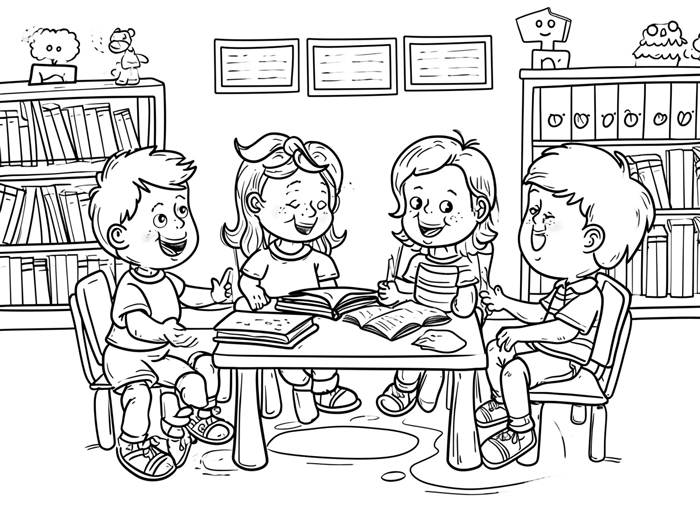
| Word | Fun Sentence for Kids |
|---|---|
| Flower | The colorful flower bloomed in the garden. |
| Frog | The frog jumped into the pond with a splash. |
| Fruit | I love to eat sweet and juicy fruit. |
| Funny | The clown at the circus was really funny. |
| Family | My family includes my parents and siblings. |
| Friend | My friend and I like to play together. |
| Fox | The fox has a furry tail and likes to hunt. |
| Feather | Feel the soft feather from the bird’s wing. |
| Firetruck | The firetruck rushed to put out the fire. |
| Favorite | Chocolate ice cream is my favorite treat. |
| Fish | We saw colorful fish swimming in the clear water. |
Science Words That Start With F
| Word | Fun Sentence for Kids |
|---|---|
| Force | A strong force makes objects move or change direction. |
| Friction | Friction is the force that slows down moving objects. |
| Fossil | Paleontologists study fossils to learn about ancient life. |
| Frequency | Radio waves have a high frequency for clear reception. |
| Fusion | The sun’s energy comes from nuclear fusion reactions. |
| Flammable | Gasoline is flammable, so we should handle it with care. |
| Fermentation | Fermentation turns grapes into yummy grape juice. |
| Fulcrum | A seesaw has a fulcrum in the middle to pivot on. |
| Flora | Flora refers to all the plants in a particular region. |
| Fauna | Fauna includes all the animals in a specific habitat. |
| Forecast | The weather forecast predicts tomorrow’s weather. |
School Words that Start with F
| Word | Fun Sentence for Kids |
|---|---|
| Friends | Friends make school a fun and happy place. |
| Folder | Put your homework in the folder to keep it safe. |
| Field trip | We went on a field trip to the zoo and saw many animals. |
| Fiction | I love reading fiction books about magical adventures. |
| Fountain | The school has a beautiful fountain in the courtyard. |
| Flag | The flag flies high on the flagpole outside our school. |
| Fine arts | Fine arts include painting, music, and dance. |
| Favorite | Math is my favorite subject in school. |
| Football | Playing football with friends is a blast. |
| Feedback | We appreciate your feedback to improve our school. |
| Fundamentals | Learning the fundamentals of math is important. |
Cool Words that Start with F For Kids
| Word | Fun Sentence for Kids |
|---|---|
| Fantastic | The magic show was absolutely fantastic! |
| Fireworks | Fireworks light up the sky on Independence Day. |
| Flip-flop | Wear your flip-flop sandals to the beach. |
| Fountain | Make a wish and toss a coin into the fountain. |
| Frisbee | Let’s play catch with a colorful frisbee. |
| Fudge | Chocolate fudge is a delicious treat. |
| Fairytale | I love reading fairytale stories before bedtime. |
| Fiesta | The fiesta had music, dancing, and yummy food. |
| Flashlight | Use a flashlight to explore in the dark. |
| Flamingo | Flamingos are tall, pink birds with long legs. |
| Firecracker | Firecrackers make a loud noise on New Year’s Eve. |
Positive Words that Start with F for Kids
| Word | Fun Sentence for Kids |
|---|---|
| Friendly | Being friendly and kind makes new friends easily. |
| Fun | Playing games with friends is so much fun! |
| Fantastic | Your artwork is fantastic; you’re a talented artist. |
| Faith | Have faith in yourself; you can do anything you set your mind to. |
| Focused | Stay focused on your goals, and you’ll achieve great things. |
| Forgiving | Forgiving others when they make mistakes is a wonderful trait. |
| Fairness | Fairness means treating everyone equally and with respect. |
| Freedom | We have the freedom to express our thoughts and ideas. |
| Fulfilling | Helping others can be a fulfilling and joyful experience. |
| Future | Your future is full of possibilities and adventures. |
| Favored | You are favored because you’re special and loved. |
Why Focus on “F Words”?
When it comes to teaching young children, finding fun and engaging ways to expand their vocabulary is key. That’s why focusing on “F words” can be a fantastic strategy for educators in preschool and kindergarten.
- Familiarity: Introducing kids to “F words” allows them to build connections with familiar objects, animals, and concepts in their daily lives. By using words like “fruit” and “firefighter,” children can make connections to things they see and experience regularly, making the learning process more relatable and memorable.
- Introduction to Phonics: Learning the letter sounds of “F words” provides a strong foundation for phonics instruction. By emphasizing the initial sound in words like “farm” and “fish,” children can begin to develop their phonemic awareness, which is crucial for reading and spelling success.
- Language Development: By expanding their vocabulary with “F words,” children are building their language skills. They learn new words and begin to understand the meanings and different uses of these words. This not only enhances their ability to communicate effectively but also lays the groundwork for reading comprehension and writing skills.
- Cognitive Development: Introducing children to a variety of “F words” stimulates their cognitive development. It helps them make connections, categorize objects and concepts, and develop critical thinking skills. For example, learning words related to the forest or friendship can help children understand their environment and navigate social interactions.
- Fun Learning Experience: Using “F words” as a teaching tool can make learning more enjoyable and engaging for kids. Incorporating games, songs, and hands-on activities related to these words can create a positive learning environment that encourages participation and active exploration.
Focusing on “F words” can support children’s language development, phonics skills, cognitive abilities, and overall engagement in the learning process. By providing a fun and interactive learning experience, educators can inspire young minds and set a strong foundation for future academic success.
Benefits of Teaching “F Words” to Kids
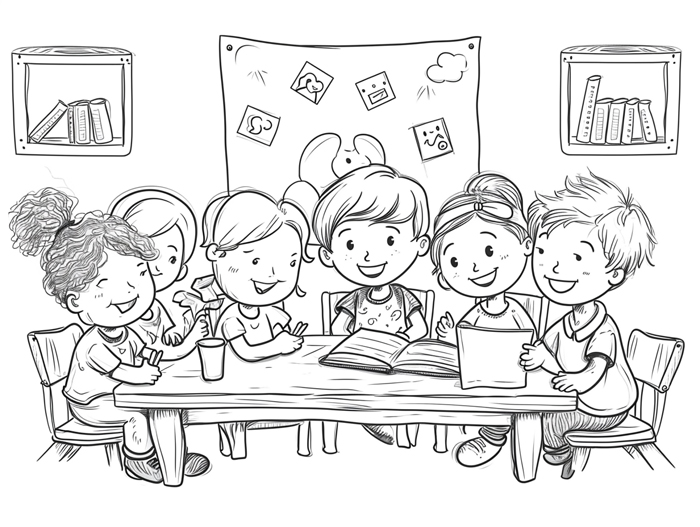
As an experienced educator, I believe that teaching young children through familiar and phonetically rich words is key to their language and cognitive development. Introducing a variety of “F words” can provide numerous benefits and create a fun learning experience for kids in preschool and kindergarten.
- Phonemic Awareness: Learning the letter sounds of “F words” helps develop phonemic awareness, which is crucial for reading and spelling. By focusing on the initial sound of words like “fish,” “frog,” and “fun,” children become more skilled at recognizing and manipulating individual sounds in words. This foundation in phonics lays the groundwork for future reading success.
- Vocabulary Expansion: Introducing children to a range of “F words” expands their vocabulary and language skills. Through exposure to words such as “flower,” “food,” and “friend,” children can make connections to objects and concepts in their daily lives. This familiarity helps them better understand and communicate with the world around them.
- Reading Comprehension and Writing: By working with “F words,” children not only enhance their oral language skills but also improve their reading comprehension and writing abilities. As their vocabulary and phonics knowledge grow, children become better equipped to comprehend written text and express their thoughts through writing.
- Cognitive Development: Introducing a variety of “F words” stimulates cognitive development in children. As they learn new words and make connections to their existing knowledge, children develop their cognitive skills such as memory, attention, and problem-solving. This active engagement in the learning process helps them build a solid foundation for future academic success.
Teaching “F words” to kids in preschool and kindergarten provides a multitude of benefits, promoting language development, phonics skills, cognitive abilities, and engagement in the learning process. By incorporating familiar and phonetically rich words into their teaching approach, educators can create an enjoyable and effective learning environment for young children.
How to Introduce “F Words” to Preschoolers
Engage in Fun Activities
When it comes to teaching young children, creating a fun and engaging learning environment is key. Here are some activities to help introduce “F words” to preschoolers:
- Fishing for Words: Create a fishing game where each fish has a different “F word” written on it. Children can use a magnetic fishing rod to catch the fish and identify the word. This interactive activity not only helps children learn new words but also improves their hand-eye coordination.
- Fruit Salad: Incorporate “F words” into a game of fruit salad. Assign each child a different “F word” fruit, such as “fig,” “fruit,” or “feijoa.” As you call out the names of the fruits, the children with those words have to switch places. This activity not only helps with word recognition but also encourages movement and social interaction.
Use Flashcards and Picture Books
Flashcards and picture books are fantastic tools for teaching preschoolers new words. Here are some tips on how to effectively use them:
- Flashcards: Create flashcards with different “F words” and corresponding pictures. Show the flashcards to the children and ask them to say the word out loud. You can also play games like “matching” or “find the word” to make the learning process more interactive.
- Picture Books: Choose picture books that prominently feature “F words” in the text or illustrations. As you read the book to the children, point out the words and encourage them to repeat after you. This not only helps them learn the words but also boosts their reading comprehension skills.
Remember, when introducing “F words” to preschoolers, it’s important to make the learning process enjoyable and interactive. By engaging in fun activities and incorporating flashcards and picture books, you can create an effective and engaging learning environment for young children.
Strategies for Teaching “F Words” in Kindergarten
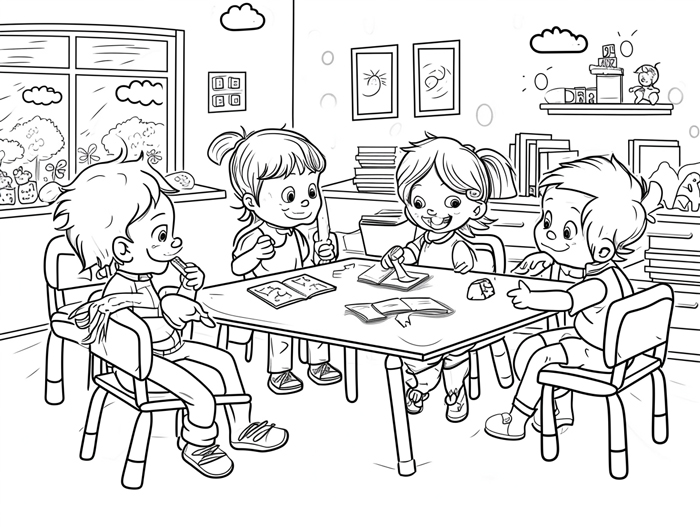
Incorporating “F words” into daily routines:
One effective strategy I’ve found for teaching “F words” to kindergarteners is to incorporate them into our daily routines. By giving students exposure to these words in familiar contexts, they are more likely to remember and understand them. Here are a few ways I integrate “F words” into our daily activities:
- Morning Meeting: During our morning meeting, I introduce a “Word of the Day” that starts with the letter “F”. We discuss its meaning, practice saying it together, and brainstorm other words that begin with the same sound.
- Calendar Time: When we review our calendar, we highlight the days of the week that start with “F”, such as Friday. This not only reinforces the letter sound but also helps students recognize the word visually.
- Story Time: I choose books that contain “F words” in the titles or within the story. As we read, I emphasize those words and encourage students to identify them as we go along.
Using interactive games and songs:
Another engaging approach to teaching “F words” is through interactive games and songs. These activities not only make learning fun, but they also help reinforce letter recognition and word association. Here are a few ideas that have worked well in my classroom:
- Fishing for Words: I create a fishing game where each fish has a different “F word” written on it. Students take turns using a magnetic fishing rod to “catch” a fish and read the word aloud. This game not only improves their word recognition skills but also enhances their hand-eye coordination.
- Farm Friends Song: I teach my students a catchy song about farm animals that starts with “F”. We sing and dance along, emphasizing the “F words” as we go. This activity helps them associate the sound and letter with familiar words and images.
- Feather Toss: I give each student a feather and ask them to toss it into a basket while saying a word that starts with “F”. This game not only promotes physical activity but also reinforces phonemic awareness as they come up with different “F words”.
By incorporating “F words” into our daily routines and utilizing interactive games and songs, I’ve found that my kindergarteners are more engaged and excited about learning these words. Creating a fun and interactive learning environment sets the stage for successful language development and lays the foundation for future literacy skills.
Common “F words” for kids to learn
As an experienced educator, I understand the importance of teaching preschool and kindergarten students the foundation of language. One way to do this is by introducing them to words that begin with the letter “F.” In this section, I will highlight some common “F words” that kids can learn and explore. Let’s dive in!
Animals: Fish, Frog, Fox
Animals are always an exciting topic for young learners. Introducing them to animal names that start with “F” can be both fun and educational. Here are a few “F words” related to animals:
- Fish: Kids will be fascinated by the vibrant colors and graceful movements of fish. Take them on a virtual underwater adventure and teach them about different fish species.
- Frog: Frogs are captivating creatures that can be found in various environments. Teach children about the life cycle of a frog, its habitat, and unique features.
- Fox: Kids will be amazed by the cunning and cleverness of foxes. Share some interesting facts about these intelligent animals and engage the children in imaginative play or crafts related to foxes.
Food: Fruit, French fries, Flamingo
Food is something that children can easily relate to, making it an ideal topic for vocabulary building. Here are three “F words” related to food:
- Fruit: Introduce children to a wide variety of fruits, highlighting their flavors, colors, and nutritional benefits. Encourage them to taste different fruits and discuss their preferences.
- French fries: Who doesn’t love a plate of crispy, golden French fries? Teach children about different ways potatoes can be prepared and explain the origins of this popular snack.
- Flamingo: While not commonly considered a food, flamingos can be a great topic for learning about animals and their unique characteristics. Share interesting facts about these tall, pink birds and engage children in art activities inspired by flamingos.
Colors: Fuchsia, Forest green
Introducing children to different colors is an important part of their early education. Here are two “F words” related to colors:
- Fuchsia: This vibrant and eye-catching color is a great way to expand children’s color vocabulary. Show them objects or pictures that have a fuchsia hue and engage them in a discussion about this unique shade.
- Forest green: Help children explore the natural world by introducing the color forest green. Discuss the plants and trees that have this shade and encourage them to identify forest green objects in the classroom or during outdoor activities.
Conclusion
Teaching preschool and kindergarten students about “F words” can be a fun and engaging way to expand their vocabulary and knowledge. By focusing on animals, food, and colors, we can introduce children to a variety of concepts while keeping their interest and curiosity piqued.
Through activities that involve animals like fish, frog, and fox, we can help children learn about different species and their habitats. By incorporating hands-on experiences and visual aids, we can make the learning process more interactive and memorable.
Introducing “F words” related to food, such as fruit, French fries, and flamingo, allows children to explore the world of flavors and textures. By incorporating taste tests, cooking projects, and discussions about healthy eating, we can help them develop a well-rounded understanding of food.
Lastly, incorporating “F words” related to colors, such as fuchsia and forest green, into learning activities can enhance children’s understanding of the world around them. By encouraging them to identify and create with these colors, we can foster their creativity and artistic abilities.
Teaching “F words” to preschool and kindergarten students is an effective way to expand their vocabulary and introduce them to new concepts. By utilizing engaging activities and hands-on experiences, we can make the learning process enjoyable and memorable for young learners.
